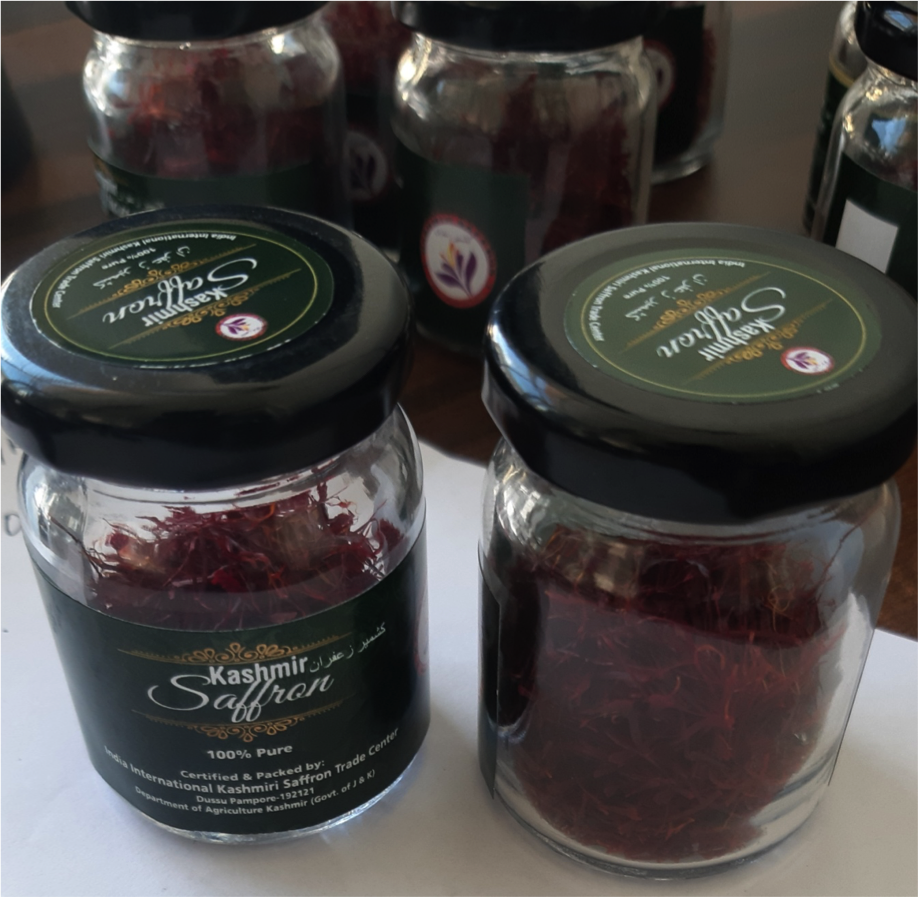
India International Kashmir Saffron Trading Centre (IIKSTC)
Directorate of Agriculture Production and Farmers Welfare
(Government of Jammu and Kashmir)

Directorate of Agriculture Production and Farmers Welfare
(Government of Jammu and Kashmir)
Background and Objective:
A geographical indication (GI) is a sign used on products that have a specific geographical origin and possess qualities or a reputation that are due to that origin. In order to function as a GI, a sign must identify a product as originating in a given place. In addition, the qualities, characteristics or reputation of the product should be essentially due to the place of origin. Since the qualities depend on the geographical place of production, there is a clear link between the product and its original place of production. A geographical indication right enables those who have the right to use the indication to prevent its use by a third party whose product does not conform to the applicable standards. For example, in the jurisdictions in which the Kashmir geographical indication is protected, producers of Kashmir Saffron can exclude use of the term “Kashmir” for Saffron not grown in their fields or not produced according to the standards set out in the code of practice for the geographical indication.
However, a protected geographical indication does not enable the holder to prevent someone from making a product using the same techniques as those set out in the standards for that indication. Protection for a geographical indication is usually obtained by acquiring a right over the sign that constitutes the indication.
In a First Kashmir Saffron gets GI registration:
Iran is the largest producer of saffron in the world and India is a close competitor. However, with the GI tag, Indian Saffron (Kashmir saffron) becomes the only Saffron producing Country for which GI has been assigned which will result in more prominence in the export market thereby would boost exports and would help the farmers to get best remunerative price for economic sustainability. The GI Certification would also cease the prevalent adulteration of Saffron and will put an end to the marketing of Saffron cultivated in other countries under the garb of being produced in Kashmir which otherwise was defeating the economic interests of the farmers associated with this crop.
Kashmir Saffron:
Saffron Cultivation in Kashmir Valley dates back to 500 BC Wan Zhen a Chinese Medical Expert reports that habitat of saffron is in Kashmir. However historians date its arrival prior to 500B.C attributing it to Persia.
Saffron in India is the only saffron in the world grown at an altitude of 1,600 m to 1,800 m AMSL (above mean sea level), which adds to its uniqueness and differentiates it from other saffron varieties available the world over.
Saffron is cultivated and harvested in the Karewa (highlands) of Jammu and Kashmir and has been assigned Geographical Indication (GI) tag by the Geographical Indications Registry. The spice is grown in Pulwama, Budgam, Kishtwar and Srinagar regions of Jammu & Kashmir.
Very precious Crop
Enhancing overall economic prosperity of Saffron Farmers.
Kashmir saffron is renowned globally as a spice that rejuvenates health and is used in medicinal purposes, cosmetics and is a part of religious rituals all across the country. It has also been associated with traditional Kashmiri cuisine and represents the rich cultural heritage of the region. GI is a sign on products that have a specific geographical origin and the product has special qualities and reputation. Geographic indication leads to the overall economic prosperity of the producers. The prime purpose of registering a geographic indication is to seek protection for specific products produced in a particular geographic region that encourages the marketers to expand their business at a global level.
.png)
| Kashmir Saffron - Saffron with a difference | ||
| COMPONENT | Kashmir Saffron | Iranian Saffron |
| CROCIN CONTENT* | > 200 @ 440 nm | < 200 @ 440 nm |
| SAFRANAL | >50@ 330 nm | < 50@ 330 nm |
| PICROCROCINE | > 70 @ 257 nm | < 70 @ 257 nm |
| FILAMENT LENGTH | Long and Thick Head | Short and Thin Head |
| COLOUR | Deep Red | Red |
| CROCIN CONTENT* | 8.72% | 6.82% |
| *Source: Quality Control Lab, Directorate of Agriculture | ||
